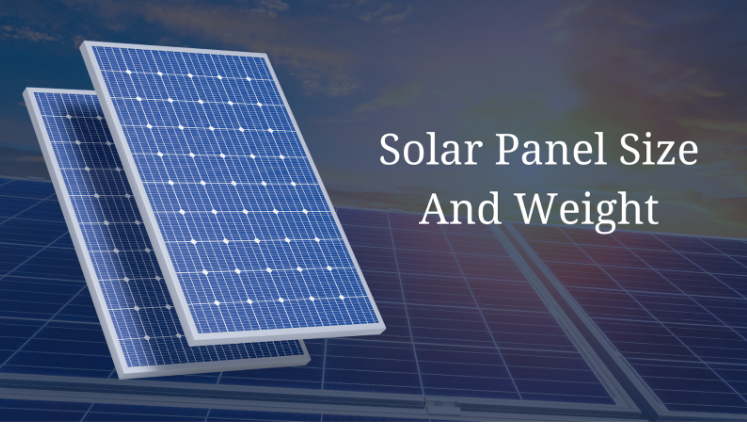As the world shifts towards sustainable energy solutions, solar panels have become a popular choice for homeowners and businesses alike.
Solar Panel Size: Everything You Need to Know
As the world shifts towards sustainable energy solutions, solar panels have become a popular choice for homeowners and businesses alike. However, with the vast array of solar panel options available, understanding the size and dimensions of these panels is crucial for ensuring an efficient and cost-effective installation. In this comprehensive guide, we’ll explore everything you need to know about solar panel size, from residential solar panels to large-scale commercial installations.
1. Residential Solar Panels: Compact and Efficient
For homeowners looking to harness the power of the sun, residential solar panels offer a practical solution. These solar modules typically range from 60 to 72 cells, with dimensions varying between 5 to 6 feet in length and 3 to 4 feet in width. Designed to strike a balance between efficiency and space constraints, residential solar panels are an ideal choice for most homes, allowing homeowners to maximize their energy output while minimizing the footprint on their rooftops.
2. Solar Panel Dimensions: Understanding the Variables
The dimensions of solar panels can vary based on several factors, including the number of cells, the type of solar technology used (monocrystalline or polycrystalline), and the manufacturer’s specifications. Generally, solar panels with a higher wattage rating will have larger dimensions, as they require more surface area to capture sunlight effectively. However, it’s important to note that larger dimensions don’t always translate to higher efficiency, as panel technology and quality play a significant role in energy production.
3. Solar Panel Wattage: Maximizing Energy Output
The wattage of a solar panel is a crucial factor in determining its size and energy output potential. Residential solar panels typically range from 200 to 400 watts, while commercial and utility-scale installations often feature larger solar modules with wattages ranging from 300 to 500 watts or higher. When selecting the appropriate solar panel wattage, it’s essential to consider your energy needs, available roof space, and budget constraints to ensure an optimal and cost-effective solution.
4. Large Solar Panels: Powering Commercial and Industrial Facilities
For commercial and industrial applications, larger solar panels are often preferred to maximize energy generation. These photovoltaic (PV) panels can measure up to 8 feet in length and 4 feet in width, offering wattages ranging from 300 to 500 watts or more. While they require more installation space, these large solar panels are an efficient solution for businesses, industrial facilities, and large-scale solar farms, providing the necessary energy output to meet their substantial power demands.
5. Solar Panel Weight: Considering Roof Load Capacity
In addition to size, the weight of solar panels is another crucial factor to consider, especially for rooftop installations. While residential solar panels typically weigh between 35 and 50 pounds, larger commercial panels can weigh up to 100 pounds or more. It’s essential to ensure that your roof structure can support the combined weight of the solar panels, racking systems, and any additional equipment to prevent potential structural damage and ensure a safe and secure installation.
6. Solar Panel Options: Tailoring to Your Needs
When it comes to installing solar panels, there isn’t a universal solution that fits every situation. Manufacturers offer a variety of solar panel options to cater to different energy needs, roof sizes, and budgets. From high-efficiency monocrystalline panels to cost-effective polycrystalline modules, it’s crucial to work with a reputable solar installer to determine the best solar panel size, type, and configuration for your specific requirements, ensuring optimal energy production and long-term cost savings.
7. Solar Panel System: Considering Panel Quantity and Layout
While individual solar panel size is important, the overall solar panel system design plays a significant role in maximizing energy generation. Solar installers will assess your energy needs, available roof space, and sun exposure to determine the optimal number of solar panels and their layout. This careful planning ensures that your solar panel system operates at peak efficiency, providing reliable and cost-effective renewable energy for years to come.
8. Solar Panel Price: Balancing Cost and Efficiency
The cost of solar panels can vary significantly based on the size, wattage, and technology used. While larger and more efficient solar panels generally come with a higher upfront cost, they can offer long-term savings through increased energy production and lower maintenance requirements. It’s essential to consider the lifetime energy output, return on investment, and available incentives or tax credits when evaluating solar panel options and their associated costs.
Conclusion
Choosing the right solar panel size is a critical step in ensuring an efficient and cost-effective solar installation. By understanding the dimensions, wattage, and weight considerations, homeowners and businesses can make informed decisions that align with their energy needs, available roof space, and budget constraints. With the increasing popularity of solar energy and advancements in solar panel technology, there has never been a better time to explore the benefits of solar panel installations. By carefully evaluating your options and working with experienced solar

